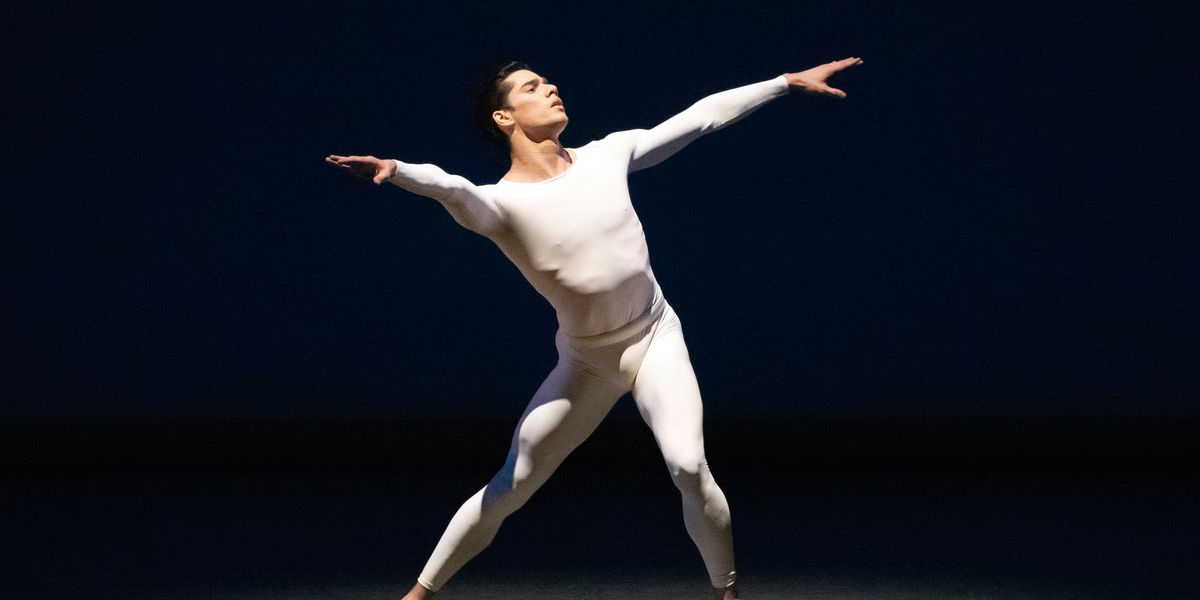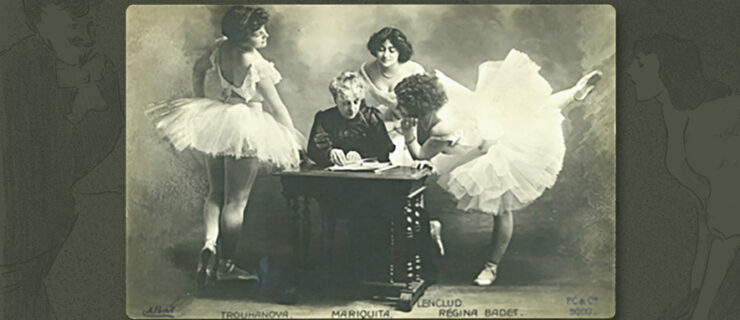Jovani Furlan Opens Up About His New Life at New York City Ballet
Jovani Furlan is on a roll. Since moving to New York City Ballet from Miami City Ballet last summer, the 26-year-old soloist has stepped into one ballet after another with lightning speed. In the winter season alone, he danced such desirable—and contrasting—roles as the male lead in Jerome Robbins’ sensual and summery In G Major, Siegfried in Swan Lake, and the eccentric (and demanding) solo Balanchine created for Paul Taylor in his 1959 ballet Episodes. “We thought his personality and manner would fit really well within the company,” says Jonathan Stafford, NYCB’s artistic director, of the decision to hire Furlan. That hunch has proven to be spot-on. According to Stafford, “in a very short period, he’s become incredibly valuable.”
The electricity with which Furlan attacks movement first drew the eye of Edward Villella, his onetime mentor at the Miami City Ballet School. But he’s not just a firecracker; his dancing has finesse and a bracing clarity as well. Before going to Miami, he studied in his native Brazil, in a school that specialized in Russian technique. Everything changed for him, he says, when he was introduced to the ballets of George Balanchine, whose technique and style underpins the repertories of both MCB and NYCB. “I love dancing Balanchine,” Furlan told me in a recent interview during a break in his rehearsal schedule. “It’s so right, so musical.”
A few weeks ago, we talked about how he’s adjusting to life at his new company.

Furlan in Jerome Robbins’ Concertino
Erin Baiano, Courtesy NYCB
You’ve jumped into leading roles in something like 12 ballets since you got here last fall. Did you expect to do so much so soon?
It’s been better than anything I could have imagined. I did more shows during the fall season than I would have done in a whole year in Miami.
How do you handle the intensity of the workload?
With a lot of deep breaths. The beginning was hard. We dance so much. I got thrown into a new role in Christopher Wheeldon’s DGV: Danse à Grande Vitesse at the last minute. For three days before the show, I would go home with the music, fill a suitcase with whatever I could find in my apartment and do the entire pas de deux, twice, while carrying a suitcase, just to get my stamina where it needed to be. That put me in the right headspace.
Have you found ways to manage the pressure?
When I moved here, I started therapy, because I was feeling a little burned out from dance. I had had a lot of injuries, and I needed to overcome the mental effects of that so as not to panic about my workload. I do a lot of breath work in the morning. A friend introduced me to kundalini, a combination of yoga and meditation. And someone else suggested cold showers—it actually makes it so much easier to get through any other challenge in the day.

With Ashley Bouder in Peter Martins’ Swan Lake
Erin Baiano, Courtesy NYCB
How is the culture at NYCB different from Miami?
Here it’s very much a group of individuals. Everyone takes responsibility for themselves and for their body. If you don’t feel great or something is hurting, you can mark things in rehearsal. There’s a lot of trust put in the dancers. This place is like a huge machine. Sometimes you don’t even know what’s going on around you.
Why did you want to come to New York?
I always had it at the back of my head that I would love to go to NYCB, even though I thought it was impossible, because they only take dancers from the School of American Ballet. And I was very, very happy at Miami City Ballet. I told [artistic director] Lourdes Lopez I wanted to retire there.
So what changed?
I saw that NYCB was going through a director transition and that they had lost three of their main principal male dancers. And I just felt that if I’m going to do this, this is the time to reach out. It’s an opportunity. I was a little burned out and I needed a change. So I reached out to Justin Peck, whom I already knew, and who was then part of the transitional leadership team, and they invited me up to audition.
Recently you danced the 1959 solo that Balanchine created for Paul Taylor in
Episodes, which you had already danced in Miami.
I learned it from Peter Frame [a former New York City Ballet dancer], who had learned it from Paul Taylor. One of the hardest things for me was the music, because there are no counts. You just have to know when the different instruments come in. I found a recording of the solo on YouTube, and listened to it over and over. It became almost second nature.
And you taught it to Michael Trusnovec, one of Paul Taylor’s star dancers, who performed it with NYCB, as well. What was that like?
It was Lourdes’s idea for me to teach it to Michael. He came down to Miami to watch the solo and sit down with me. We talked it over; he wasn’t sure he could do it, and I convinced him he could. It was amazing to see how it worked on him because of his modern-dance training. He has this groundedness, combined with this amazing spring.

Furlan (in arabesque) with members of NYCB in Justin Peck’s Rotunda
Erin Baiano, Courtesy NYCB
Do you feel settled?
Yes! I found an apartment on West 54thStreet, so I’m only eight blocks away from Lincoln Center. And I have a bike, so I bike everywhere. Sometimes I go over to Riverside Park and just sit and read a book on my Kindle, and watch the people go by.





